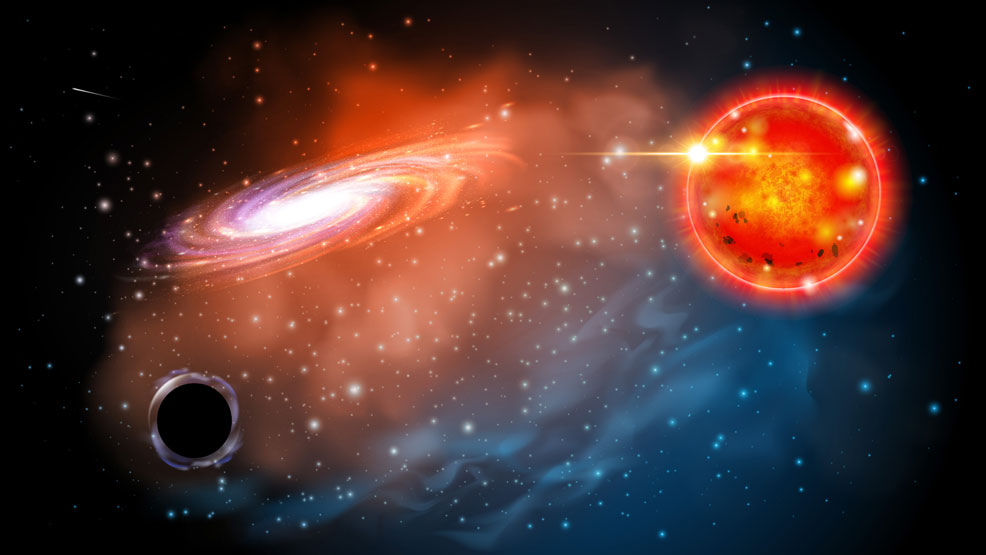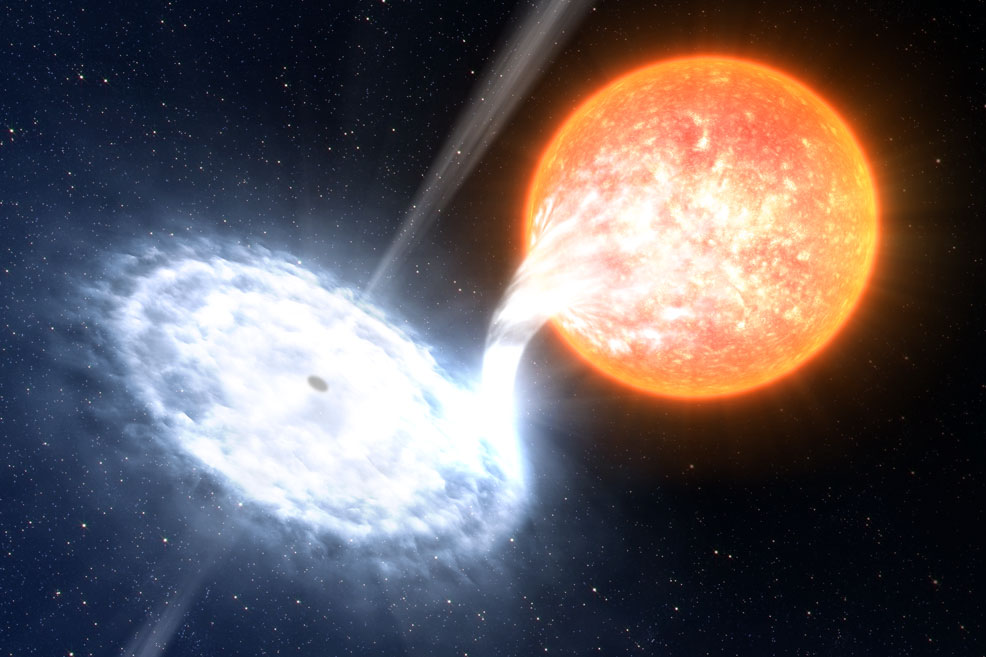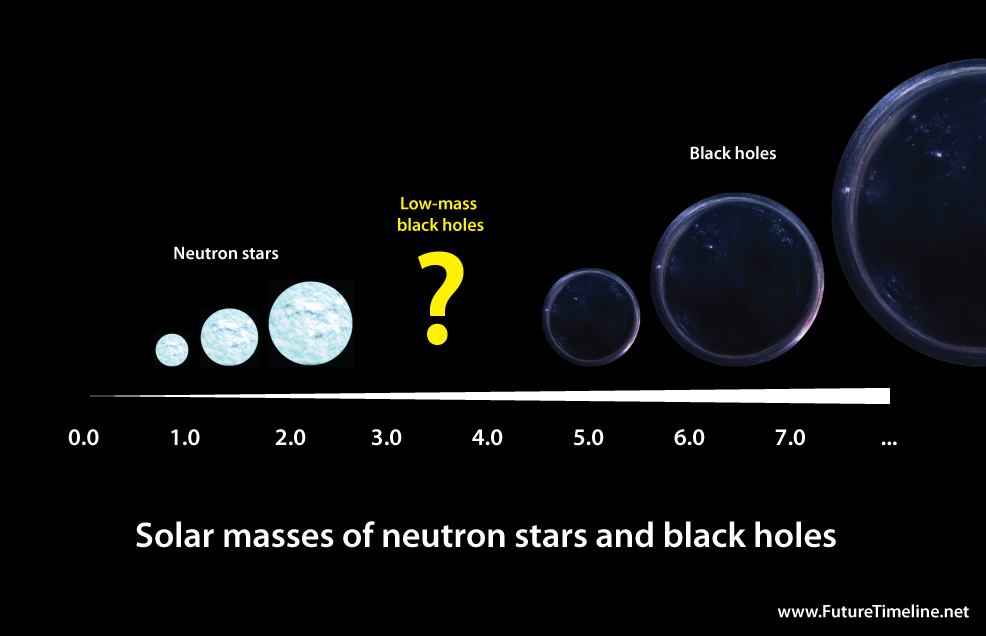
20th November 2019 Possible new class of black holes discovered A new study by Ohio State University shows there may be an entire class of black holes that astronomers did not know existed.
In a study published by the journal Science, astronomers offer a new way to search for black holes, and show it is possible that a smaller class of these objects might exist – lying mid-way between a neutron star and the current smallest known black holes in terms of mass. "We're showing this hint that there is another population out there that we have yet to really probe in the search for black holes," says Todd Thompson, Professor of Astronomy at Ohio State University and lead author. "People are trying to understand supernova explosions, how supermassive stars explode, how the elements were formed in supermassive stars. So if we could reveal a new population of black holes, it would tell us more about which stars explode, which don't, which form black holes, which form neutron stars. It opens up a new area of study." Imagine a city census, which only counted people 5'9" and taller – and imagine that the census takers didn't even know that people shorter than 5'9" existed. Data from that census would be incomplete, providing an inaccurate picture of the total population. That is essentially what has been happening in the search for black holes, Thompson explains.
Black holes often exist in binary systems, in which two stars are close enough to be locked together by gravity in a mutual orbit around one another. If one of those stars dies, the other can remain, still orbiting the space where the dead star once lived, and where a black hole or neutron star has now formed. Until recently, the known stellar-mass black holes (i.e. not intermediate or supermassive varieties) were generally observed at between five and 15 times the mass of our Sun. Meanwhile, the known neutron stars have a maximum of 2.17 solar masses: any higher and they would collapse into a black hole. However, astronomers are now finding evidence of black holes that lie outside the normal, expected range. In 2017, for example, the Laser Interferometer Gravitational-Wave Observatory (LIGO) witnessed a pair of black holes merging in a galaxy about 1.8 million light years away. One of those black holes was about 31 times the mass of our Sun; the other had 25 solar masses. Two black holes together, both with such high mass, was incredibly rare and unusual. "Immediately, everyone was like 'wow,' because it was such a spectacular thing," says Thompson. "Not only because it proved that LIGO worked, but because the masses were huge. Black holes that size are a big deal – we hadn't seen them before." Astrophysicists had long suspected that black holes might come in sizes outside the known range, and LIGO proved they could be larger. But there remained a window of size between the biggest neutron stars and the smallest black holes. Thompson wanted to solve that mystery.
He and other scientists began combing through data from the Apache Point Observatory Galactic Evolution Experiment (APOGEE), which collected light spectra from 100,000 stars across the Milky Way. The spectra, Thompson realised, could show whether a star may be orbiting around another object. Changes in spectra – a shift toward bluer wavelengths, for example, followed by a shift to redder wavelengths – could show that a star was orbiting an unseen companion. Thompson combed through the data, looking for stars revealing that change, hinting that they might be orbiting a black hole. He narrowed it down to 200 stars that were considered the most interesting. He then gave the data to Tharindu Jayasinghe, a graduate research associate at Ohio State University, who compiled thousands of images of each potential binary system from the All-Sky Automated Survey for Supernovae (ASAS-SN). Eventually, this data crunching found a giant red star that appeared to be orbiting something – but that something, based on their calculations, was likely much smaller than the known black holes in the Milky Way. It was also, however, much bigger than the known neutron stars. After more calculations, which included additional data from the Gaia spacecraft, they realised they had found a new class of low-mass black hole, likely to be around 3.3 times the mass of our Sun. "What we have done here is come up with a new way to search for black holes – but we've also potentially identified one of the first of a new class of low-mass black holes that astronomers hadn't previously known about," Thompson said. "The masses of things tell us about their formation and evolution, and they tell us about their nature." Future observatories will greatly improve the ability to detect and characterise black holes. For example, the Laser Interferometer Space Antenna (LISA) is a successor to the aforementioned LIGO, planned for launch in 2034. Although the LIGO mission has made historic discoveries – including the first known merger of black holes – it can only predict these events a matter of seconds in advance. The LISA spacecraft, however, being far more powerful and sensitive, will predict black hole mergers not seconds, but weeks, months, or even years in advance, giving astronomers time to plan ahead and conduct better studies. LISA will track relative displacements with a resolution of just 20 picometres, less than the width of a helium atom, as it looks for ripples in the fabric of space-time.
Comments »
If you enjoyed this article, please consider sharing it:
|









